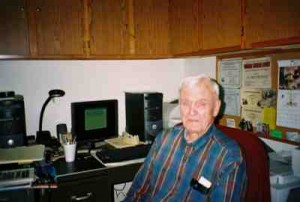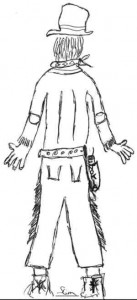Brief by Central Staff
Mining History – September 2005 – Colorado Central Magazine
On Sept. 17, the National Mining Museum in Leadville will induct five new members to its Hall of Fame. All are pioneers of the mining industry.
Four made their careers outside Colorado: John M. Longyear, 1850-1922, iron mining in Michigan; John McDonald, 1848-1918, copper mining in Utah; Julius E. Raht, 1826-79, copper mining in Tennessee; and John D. Ryan, 1864-1933, copper mining in Montana.
The Coloradan on the list is Nathaniel Peter Hill, 1832-1900, who saved the territory’s mining industry in the 1860s.
Most mining in the territory involved gold in Gilpin County then. The shallow deposits had free gold embedded in quartz veins, which could be extracted by crushing with a stamp mill. But as the mines went deeper, they encountered complex sulphide and pyrite ores whose gold could not be recovered so simply.
Hill, a professor of chemistry at Brown University in Rhode Island, visited Colorado in 1864. He liked what he saw, resigned his position at Brown, and bought two gold mines near Central City. But then he ran into the complex ore.
The ore had to be smelted, but no one in Colorado knew how to do it. Brown examined several processes before settling on the process used at Swansea, Wales, which he visited in 1866 with a bag of ore.
Having found the key, he returned to Colorado, assembled some investors, and started the Boston and Colorado Smelting Co. The first smelter, in Black Hawk, opened in 1868. The company built another at Alma in 1872 before consolidating in 1879 on the Argo Smelter in Denver. He made a fortune, and served as a U.S. senator from Colorado from 1879 to 1885.
There’s a connection between the Hill family and one of Leadville’s most famous residents, Margaret Tobin “Unsinkable Molly” Brown. Hill’s son, Crawford, was prominent in Denver society, and Crawford’s wife, Louise Sneed Hill, was the leader of Denver’s social elite, the “Sacred 36.”
Margaret Brown’s husband, James Joseph Brown, was superintendent of the Little Jonny Mine east of Leadville. He found a way to keep its tunnels from filling with sand, and in 1894 the owners rewarded him with stock. Thus enriched, the family moved to Denver.
Margaret Brown, though wealthy, was not accepted by Louise Hill and her social set. In the words of Denver historian Tom Noel, the Browns’ “fortune and their lavishly furnished Capitol Hill mansion normally would have gotten them into society. Maggie desperately wanted to be accepted. ‘Perhaps no woman in society has ever spent more time or money becoming “civilized,”‘ the Denver Times observed. Unfortunately, Maggie was Irish and Roman Catholic. Her spelling was faulty, her wardrobe garish, her mother smoked a pipe.” Her invitations were refused, and she did not get invited to the upper crust’s social events.
But after Margaret Brown became “Unsinkable” in the Titanic disaster of 1912, “Even Mrs. Crawford Hill asked Molly Brown to lunch.”


